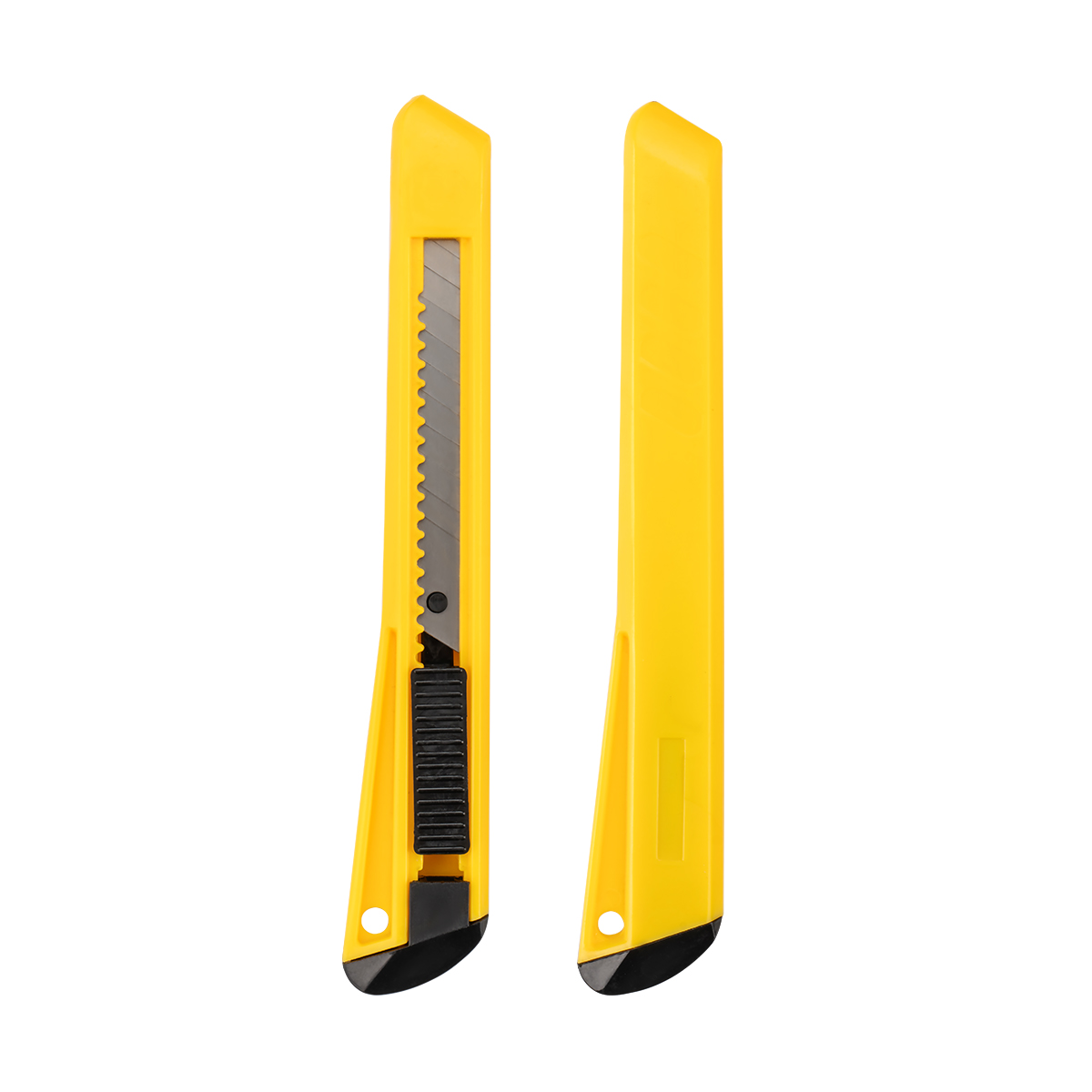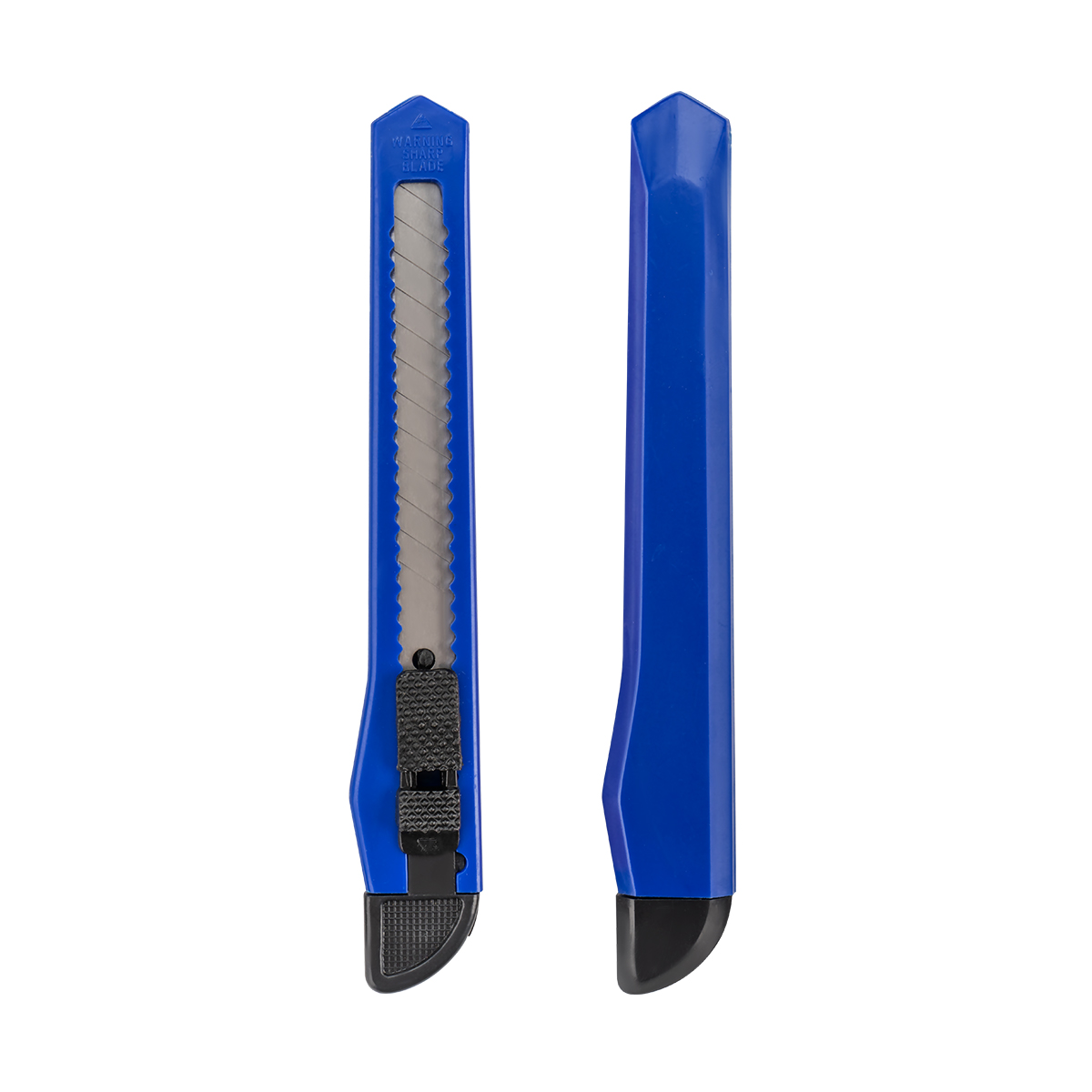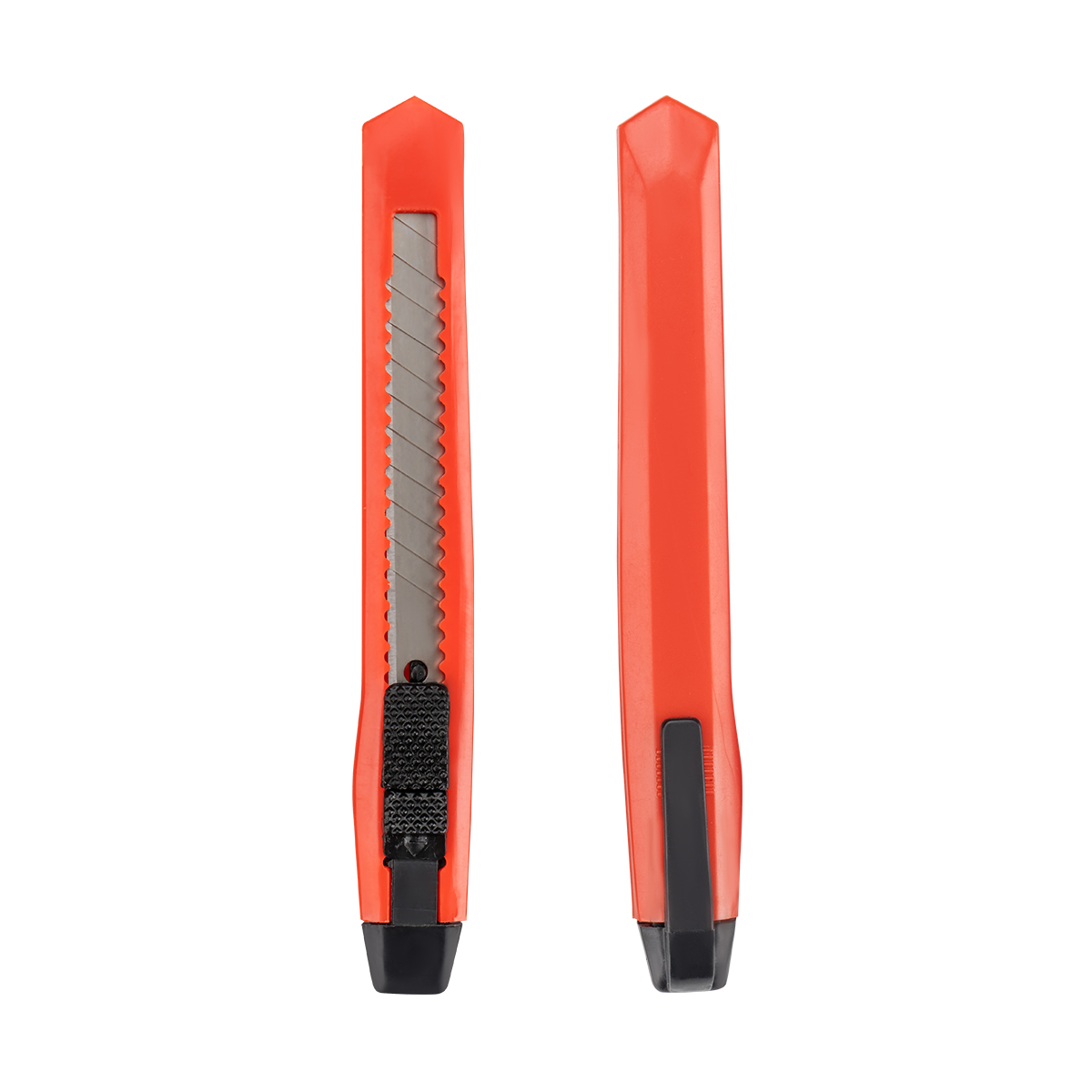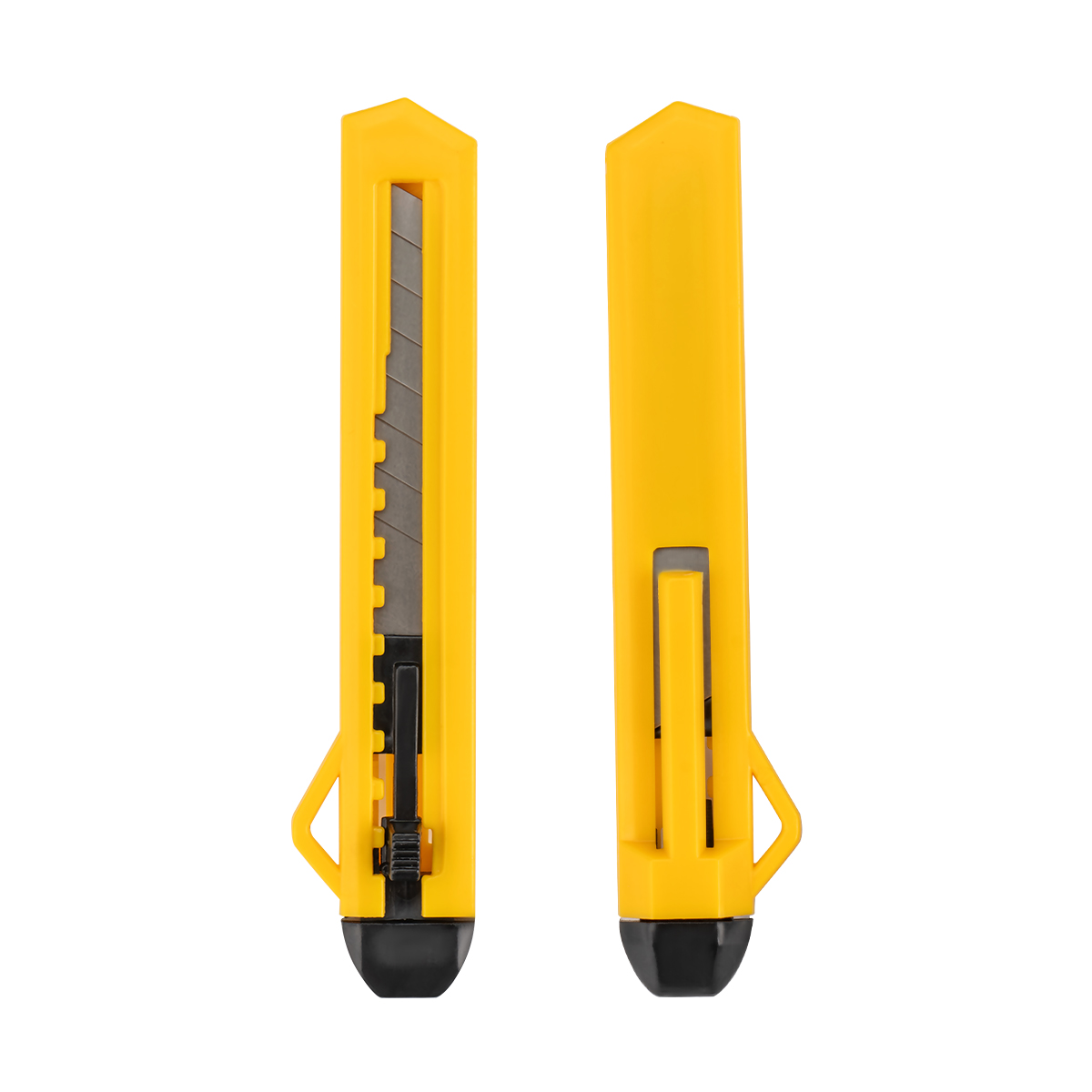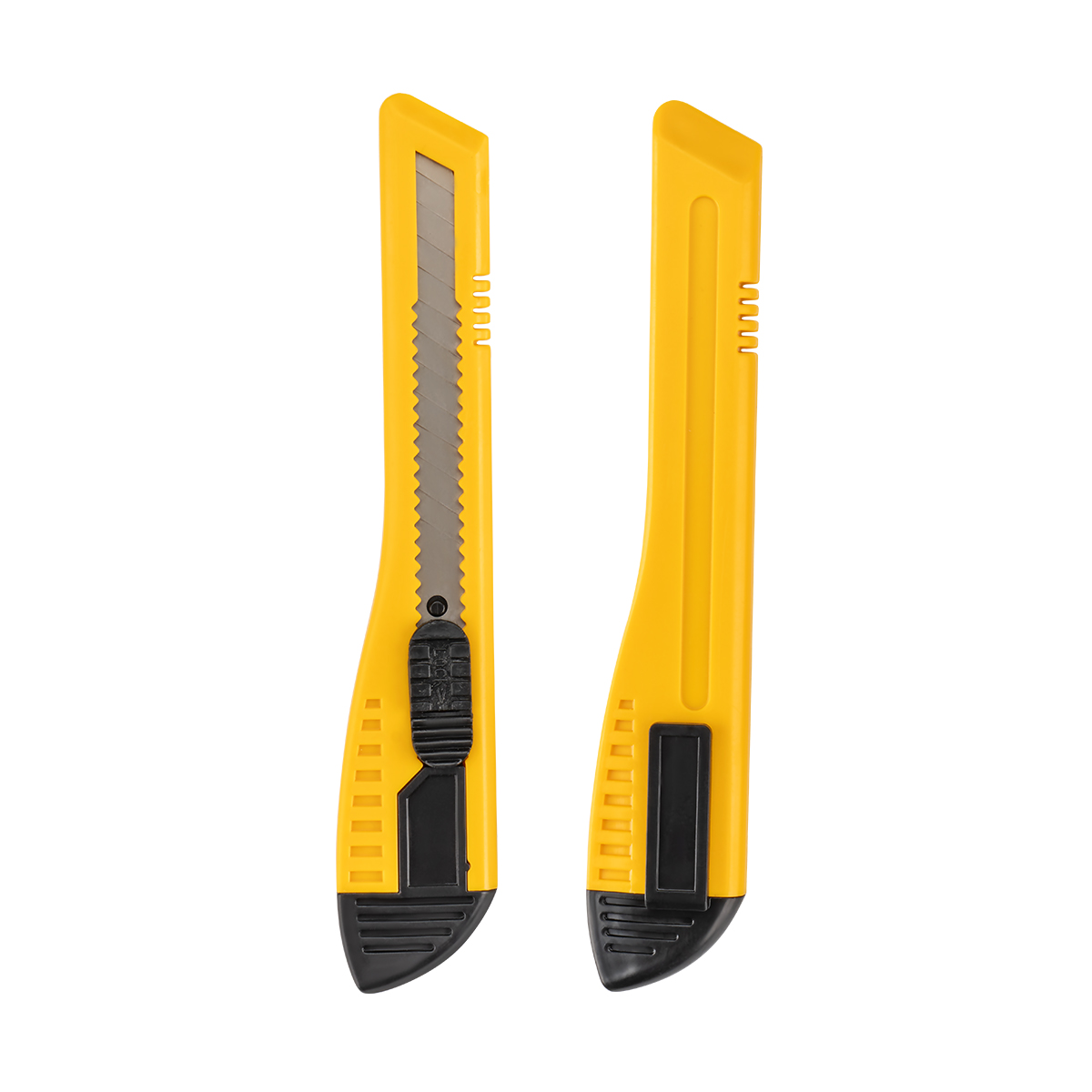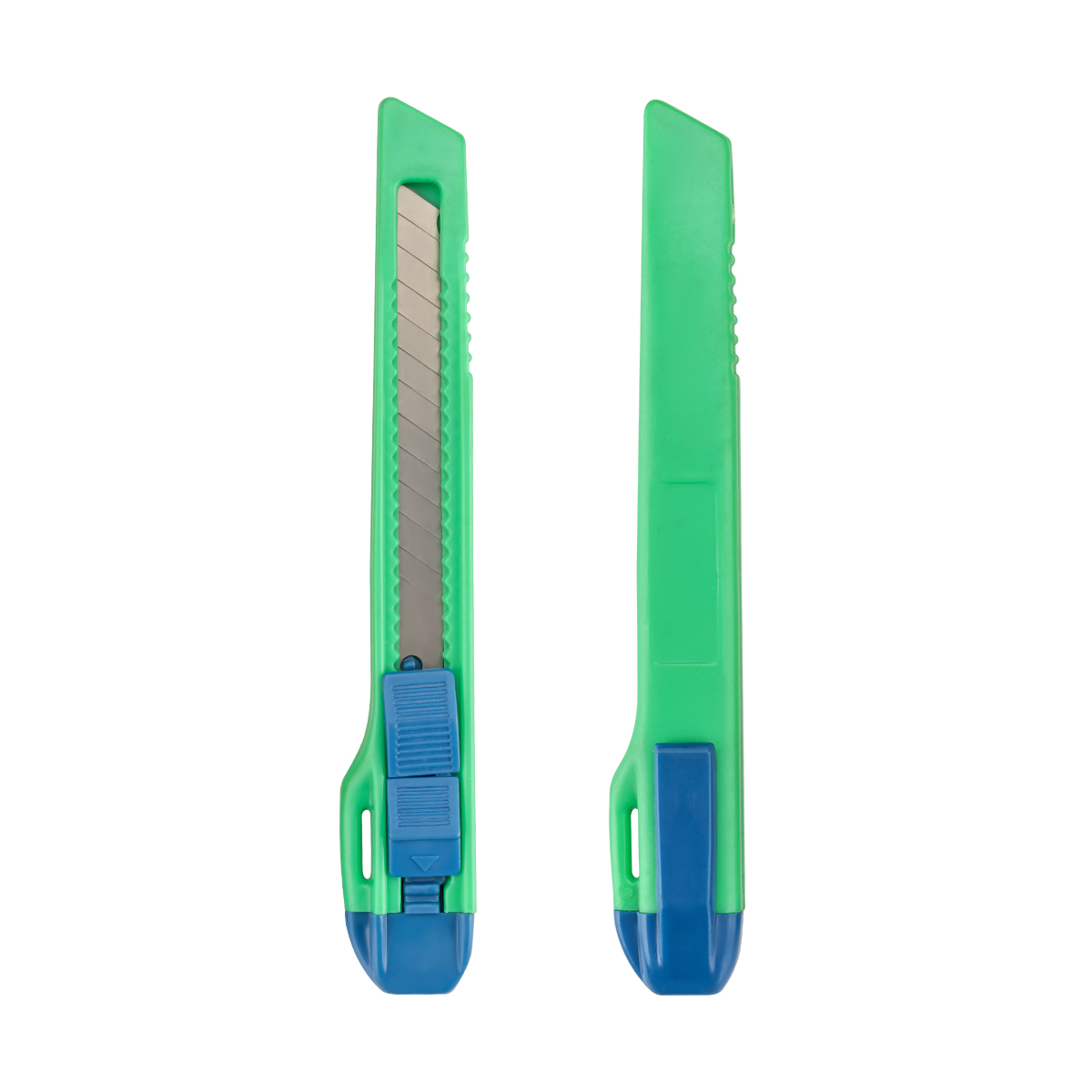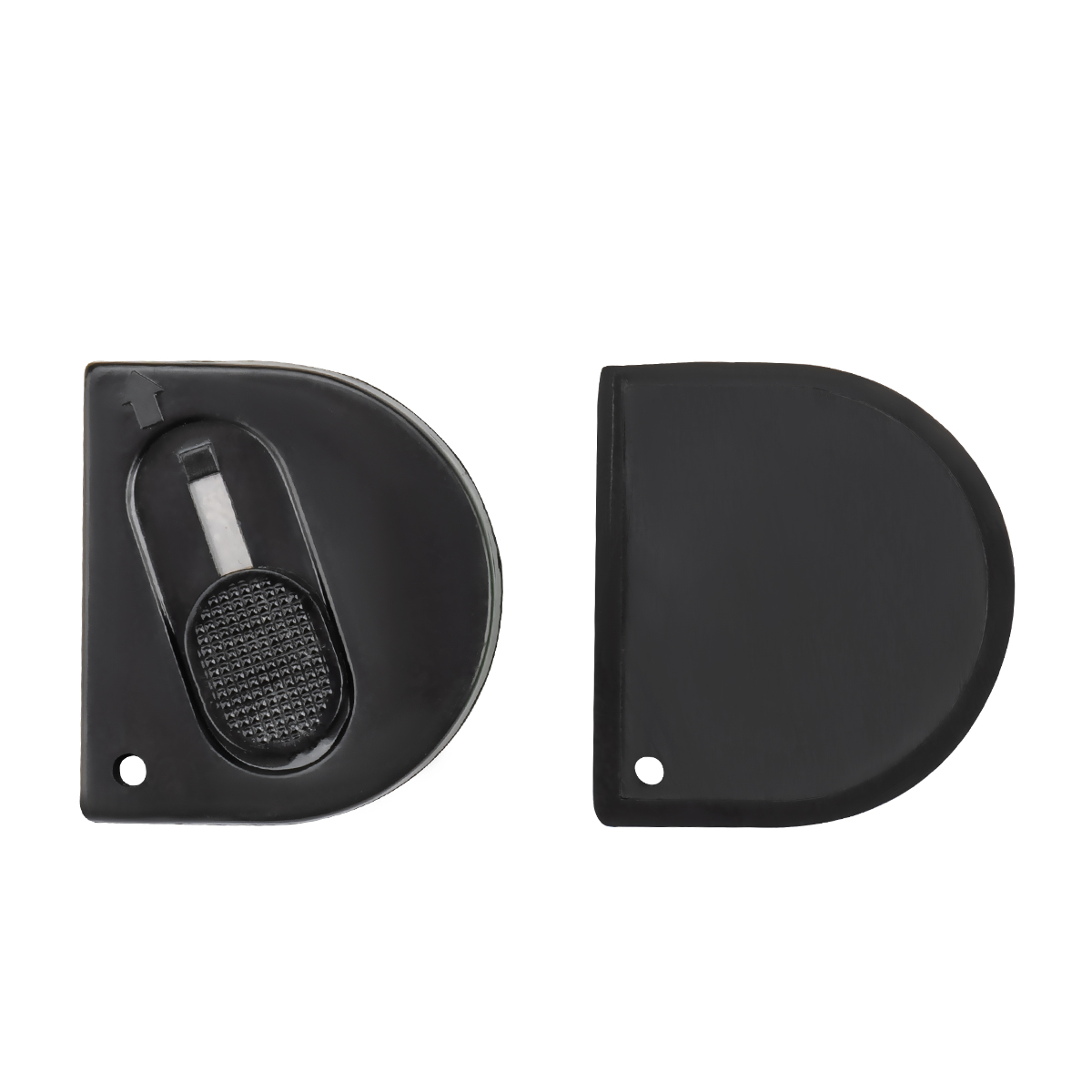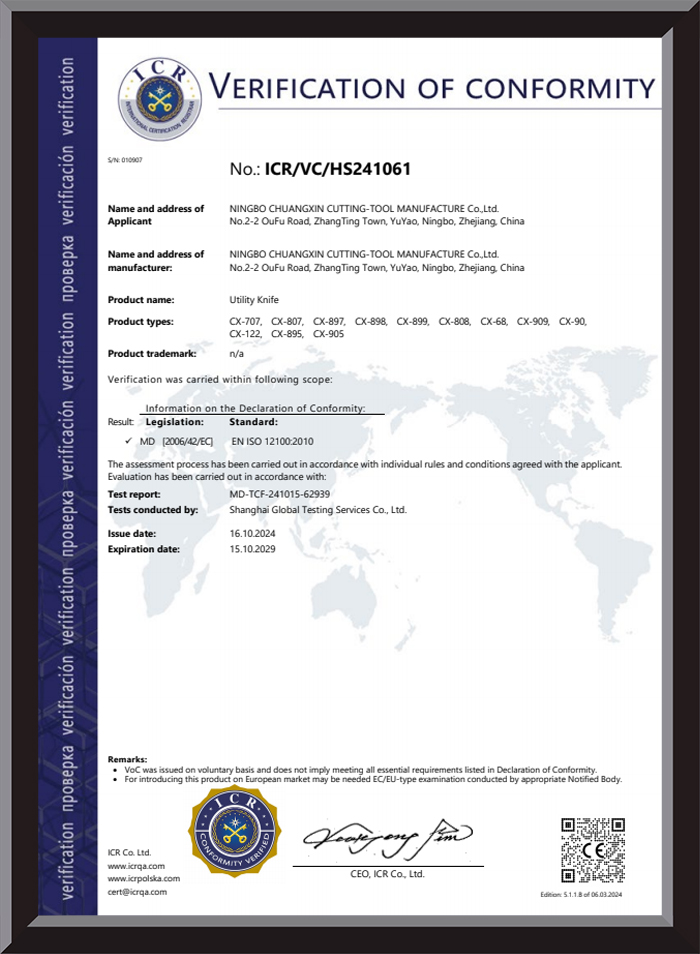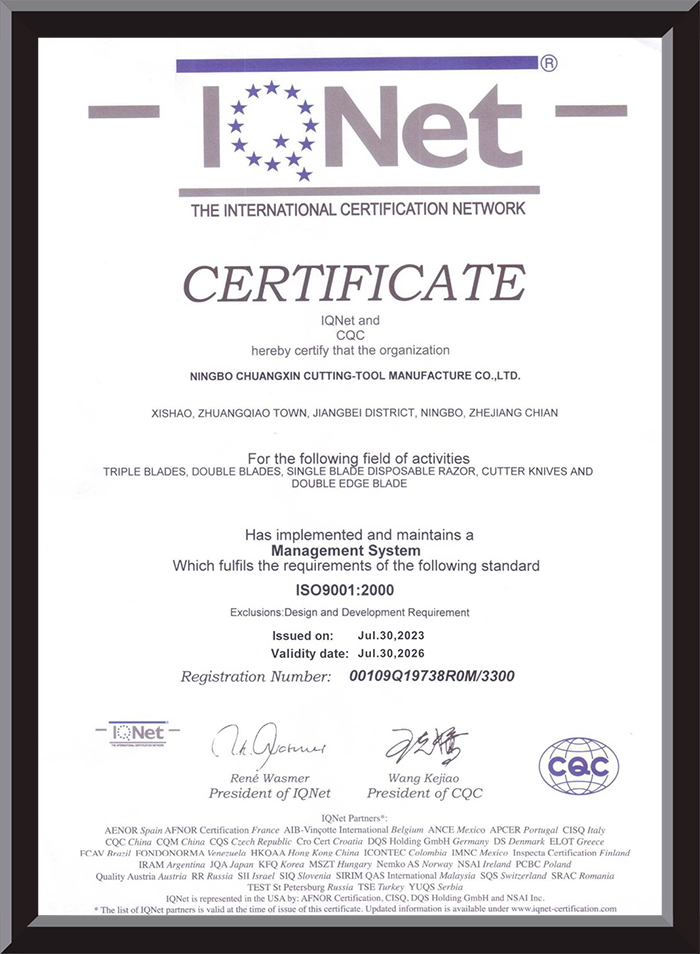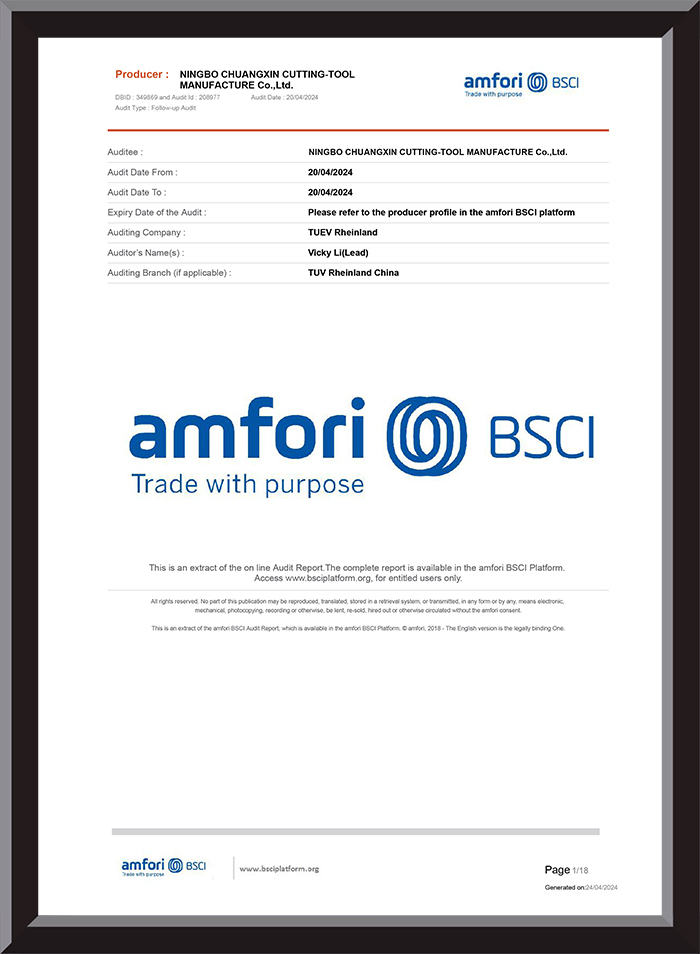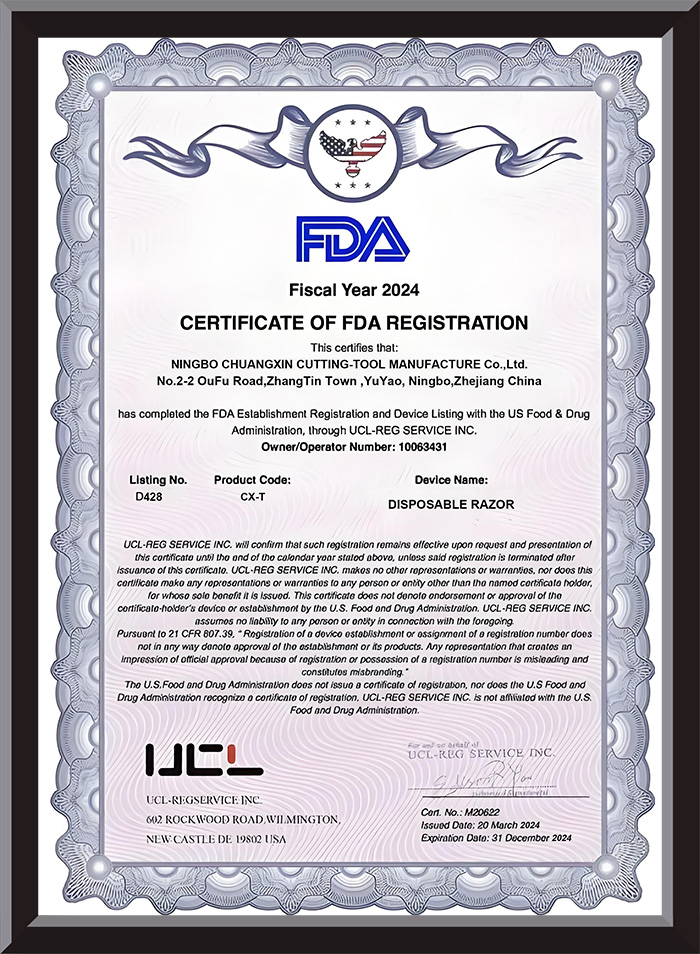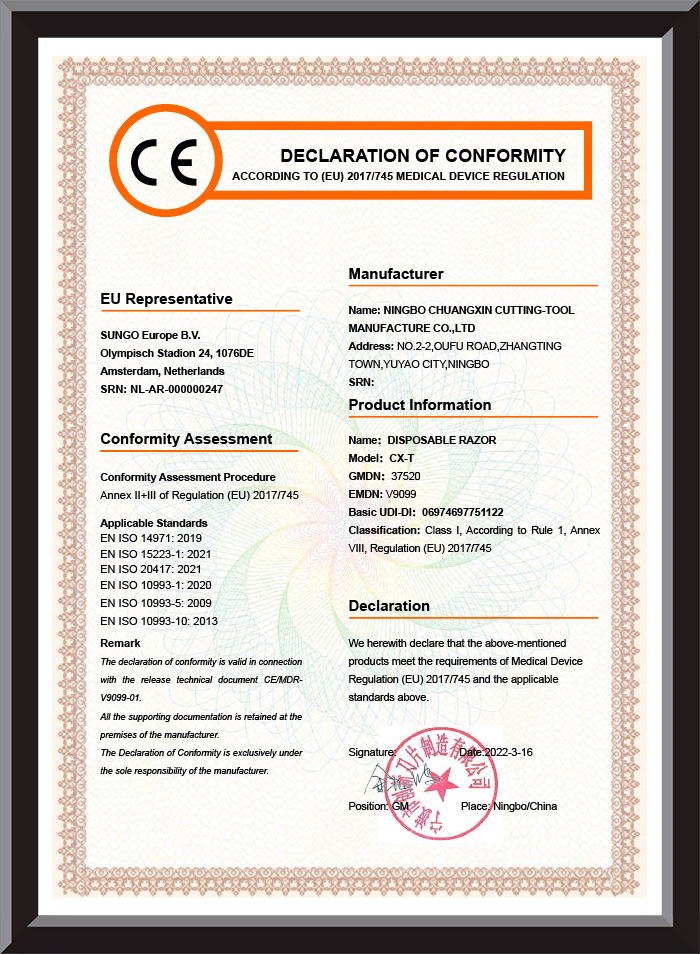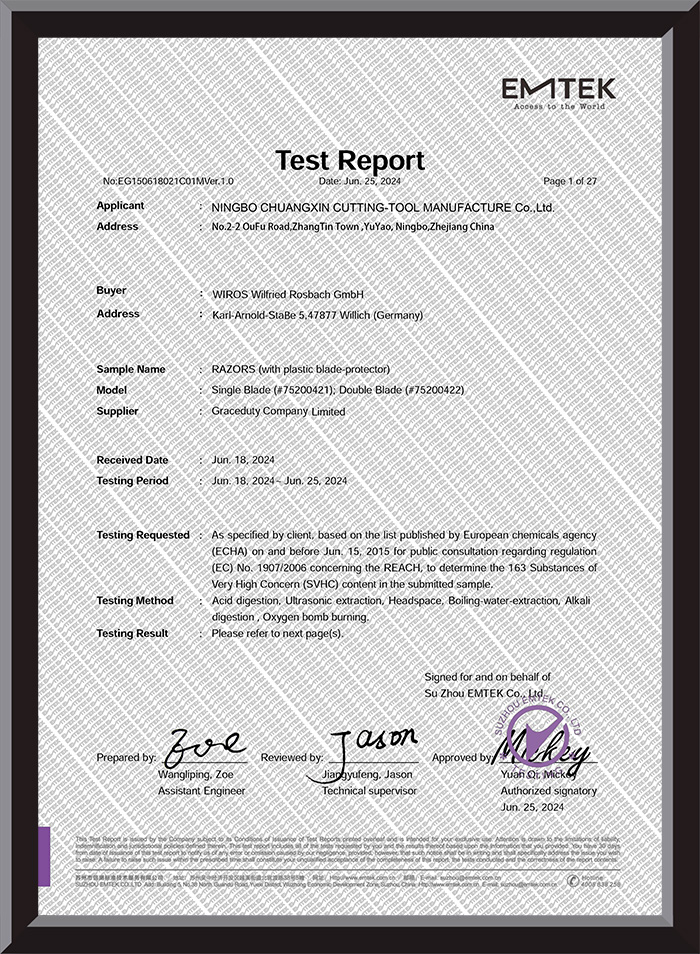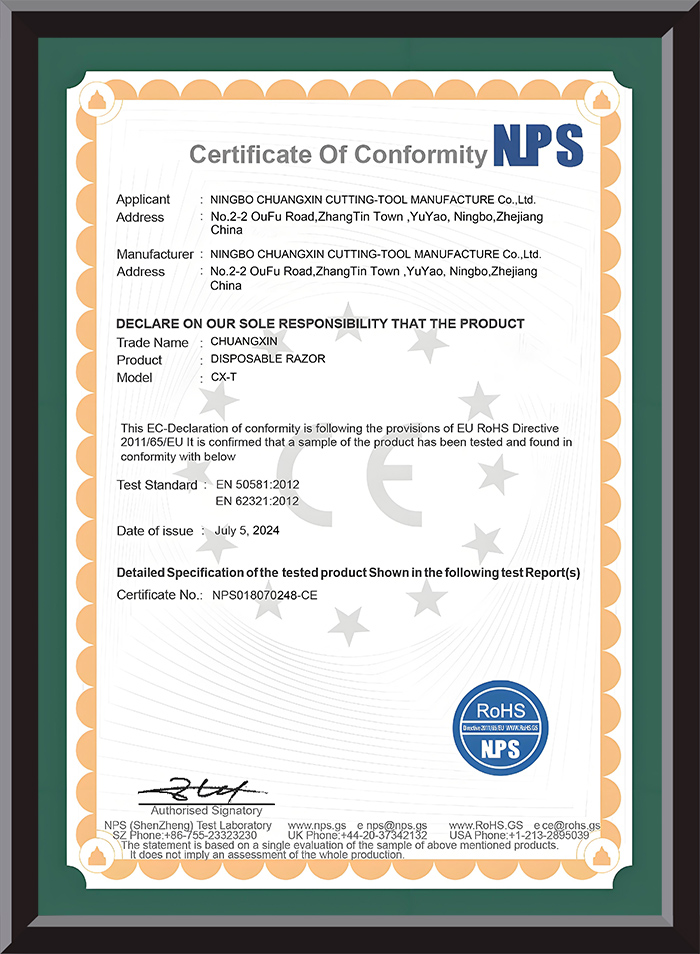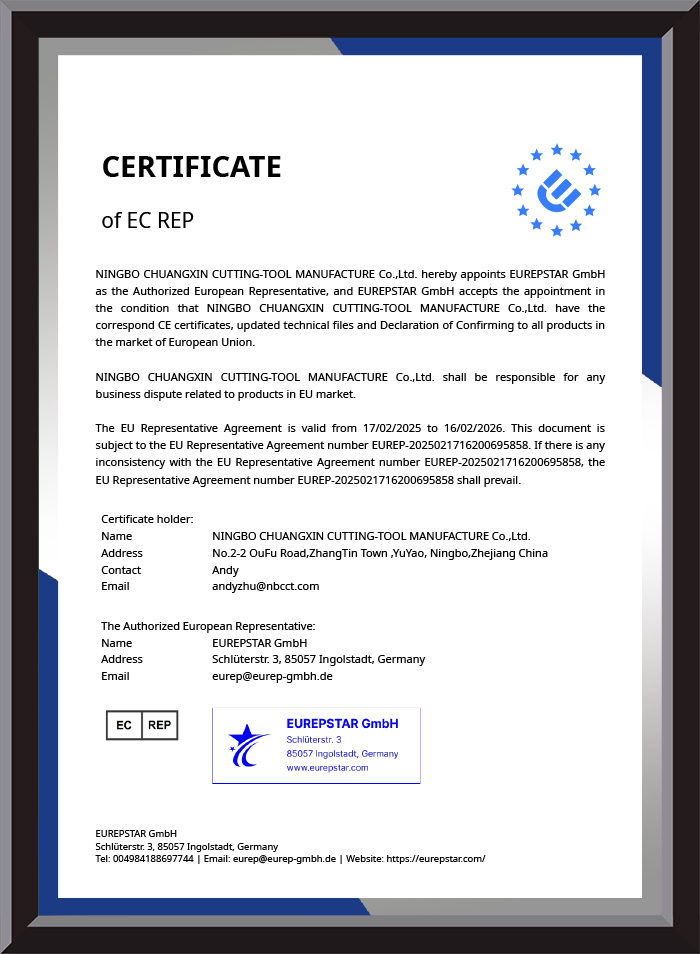What are the common types of blade materials for 9mm stationery utility knife?
The blade materials used for 9mm stationery utility knife mainly include the following categories:
SK5 High Carbon Steel
SK5 is a tool steel with a high carbon content, which has excellent hardness and wear resistance and is widely used in mid-to-high-end utility knives. The hardness of this material blade can reach HRC 60 or above, which is suitable for multiple cutting of harder materials such as paper, plastic film, cardboard, etc. In the product line of Ningbo Chuangxin Cutting-Tool Manufacture Co., Ltd., SK5 material is often used in its export-oriented 9mm stationery utility knife series, which takes into account sharpness and durability and is a highly recognized choice in the international market.
SK2 Tool Steel
SK2 is a higher grade of high carbon steel with higher hardness and stronger cutting force than SK5. It is usually used for industrial utility knives that require higher precision or stronger cutting force. Due to its slightly higher brittleness, it needs to be balanced with excellent heat treatment process. Ningbo Chuangxin's professional R&D team has more than 30 years of experience in heat treatment, which makes SK2 blades have a good balance between hardness and toughness, and are widely used in customized orders for technical customers.
Stainless Steel
Stainless steel blades are known for their excellent anti-rust performance and are particularly suitable for humid environments, such as coastal offices, laboratories, food packaging workshops, etc. Although the hardness of stainless steel blades is relatively slightly lower than that of high carbon steel, its stability and corrosion resistance provide reliable protection for specific users. Ningbo Chuangxin optimizes the stainless steel ratio and coating process to improve the cutting sharpness of stainless steel blades while maintaining the anti-rust performance.
Carbon Tool Steel
This material is a common material for basic 9mm utility knives. It has a certain toughness and processing flexibility. It is suitable for medium and low-intensity daily office cutting, such as paper, tape, etc. Ningbo Chuangxin positions carbon steel blades as materials for the mass market. Through large-scale production and stable process control, it achieves a good balance between price and performance, and is deeply favored by customers in large supermarket channels.
Coated Steel
Based on the original high-carbon steel, the rust resistance and wear resistance of the blade can be significantly improved by means of surface black plating (black oxidation), fluorine coating or titanium coating. This type of high-performance blade is mainly used in the high-end market to meet the professional users' requirements for high cutting frequency and high cleanliness. Ningbo Chuangxin continues to introduce advanced coating technology and has successfully applied it to some export customized blades to enhance the brand's differentiated competitiveness.
The impact of material selection on the performance of utility knives
Different blade materials show different characteristics in actual use. High-carbon steel blades are sharp but slightly less rust-resistant; stainless steel blades are highly resistant to corrosion but not as sharp as high-carbon steel; and coated blades provide a balance between the two. Reasonable selection of blade materials requires customized optimization based on the customer's usage environment, frequency and target cost.
Ningbo Chuangxin Cutting-Tool Manufacture Co., Ltd. is based on a deep understanding of user needs and more than 30 years of manufacturing experience to create a series of 9mm stationery utility knife products covering multiple materials and adapting to different application scenarios. From raw material selection, heat treatment control to coating technology, every step reflects its strict control of quality and rapid response to the diversified needs of the market.
What are the common types of handle designs for 9mm stationery utility knife?
Common handle design types
Basic Slim Handle
This type of handle is designed in the most traditional linear straight barrel shape, usually injection molded with ABS engineering plastics, with light weight and low cost, suitable for office and light use scenarios. This design emphasizes the simplicity and intuitive operation when holding, and is the mainstream structure of a large number of standard office utility knives.
In Ningbo Chuangxin's entry-level product line, the straight barrel handle design still occupies an important proportion. Through the optimization of details such as the accuracy of the card slot and the damping of the pusher slide, the product still has good quality stability even at a low-cost positioning.
Anti-Slip Rubber Grip Handle
In order to improve the grip stability and comfort during long-term use, more and more 9mm stationery utility knives are using TPR soft rubber coating design. This dual material combination (ABS+TPR) is not only effective in preventing slipping, but also reduces finger fatigue, making it the first choice for office clerks and packaging workers.
Most of Ningbo Chuangxin's mid-to-high-end models are equipped with this structure. Especially in products exported to the European and North American markets, the company's design team makes fine adjustments for different palm sizes, making the grip experience more humane, truly reflecting the "people-oriented" design concept.
Ergonomic Curved Handle
Ergonomic design has become one of the trends in the current tool industry. This type of handle adopts a streamlined curved surface design, simulating the natural curvature of fingers when grasping, improving control and flexibility during operation, and is suitable for frequent cutting scenes or fine work needs.
Ningbo Chuangxin's R&D department has established an independent design database for ergonomic handles. Combining 3D modeling and user test feedback, it has launched a number of 9mm utility knives that meet ISO ergonomic standards, which are highly recognized by customers in overseas markets, especially in Japan, Germany and other fine processing countries.
Metal Reinforced Handle
In order to improve structural strength and drop resistance, some professional-grade 9mm utility knives use a composite structure with a built-in metal skeleton, and the outer shell may be covered with plastic or aluminum alloy. This design takes into account both lightness and firmness, and is widely used in industrial and professional manual application scenarios.
As a comprehensive enterprise integrating design, manufacturing and export, Ningbo Chuangxin has also been constantly exploring breakthroughs in this field. By improving the riveting process of the metal inner frame and the sealing accuracy of the shell, the industrial structure has been successfully decentralized to some office tool series, making mid- and low-end products also have higher durability.
Eco-Friendly Recycled Handle
Driven by the wave of sustainable development, the application of environmentally friendly materials has become a new trend in the industry. Some grip designs have begun to use biodegradable plastics or recycled ABS materials, taking into account both environmental protection and basic functions.
Ningbo Chuangxin has always been committed to green manufacturing. In its R&D laboratory, it is testing a variety of environmentally friendly polymer materials for 9mm stationery utility knife grips. At present, some environmentally friendly products have entered the trial production stage, and plans to gradually launch them into overseas markets in the next few years to meet the ESG procurement needs of international buyers.
The deep impact of grip design on user experience
In addition to the structural type itself, the 9mm stationery utility knife grip design also involves multiple detail dimensions, such as:
Blade launch slide damping design: smooth sliding but not loose, improving safety;
Tail hanging hole and lock position design: convenient for hanging and quick blade replacement;
Color matching and visual language: color contrast helps to quickly locate tools and enhance brand recognition.
What are the advantages and disadvantages of the blade replacement method of the 9mm stationery utility knife?
The current 9mm stationery utility knife blade replacement method is mainly divided into the following types:
Manual disassembly replacement type (Manual Disassembly Type)
This is the most traditional and widely used method. The user needs to manually disassemble the blade structure, remove the old blade and insert the new blade to reassemble. It is mostly used for cost-controlled products.
Advantages:
Simple structure and low cost;
Easy to mass produce and maintain;
Suitable for the entry-level office stationery market.
Disadvantages:
The replacement process is cumbersome and requires a certain level of hands-on ability;
There is a risk of blade falling off or scratching due to misoperation;
Frequent disassembly and assembly can easily lead to loose structure.
Slide-Rail Quick Change Type
The user pushes the slide rail to push the blade to the tail, breaks or pulls out the old blade with force and inserts the new blade without disassembling the blade structure.
Advantages:
Quick replacement, suitable for high-frequency use scenarios;
Smooth operation process, improves work efficiency;
Reduces the risk of misassembly.
Disadvantages:
The slide rail needs to be precisely processed, otherwise it is easy to get stuck;
High requirements for material and locking accuracy;
The cost is slightly higher than the traditional manual type.
Auto-Loading Blade System
This type of structure is often used in professional or high-end multi-functional utility knives. The blade body has multiple blades built in. After using one blade, the user only needs to push the slide rail, and the system will automatically load the next blade without manually touching the blade.
Advantages:
Extremely safe, avoiding direct contact with the blade;
Extremely fast replacement speed, suitable for continuous operation scenarios;
Improve overall efficiency and professionalism.
Disadvantages:
Complex structure and high manufacturing cost;
The blade body is large and not suitable for minimalist office style;
The number of built-in blades is limited and needs to be replenished regularly.
Segment Snap-Off Type
Although technically this does not belong to the traditional sense of "blade replacement", in actual use, users can quickly restore the sharp blade by breaking off the worn part of the front end of the blade head without replacing the whole blade.
Advantages:
High blade utilization rate and good cost performance;
Convenient operation, suitable for frequent paper cutting work;
Compact structure and light blade body.
Disadvantages:
Be careful when breaking;
The stability is reduced after the blade length is shortened;
A special folding knife device or hard object is required.

 English
English 中文简体
中文简体 русский
русский Español
Español